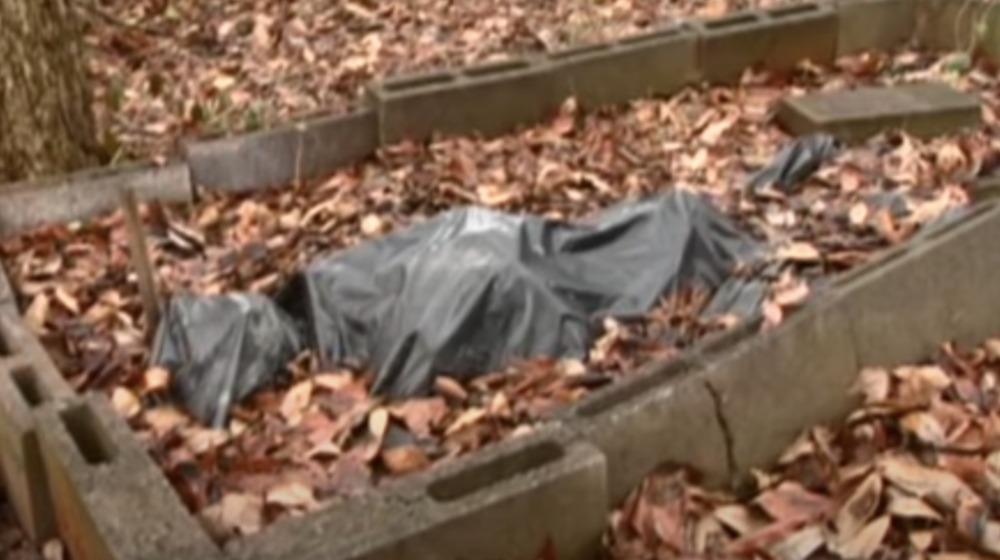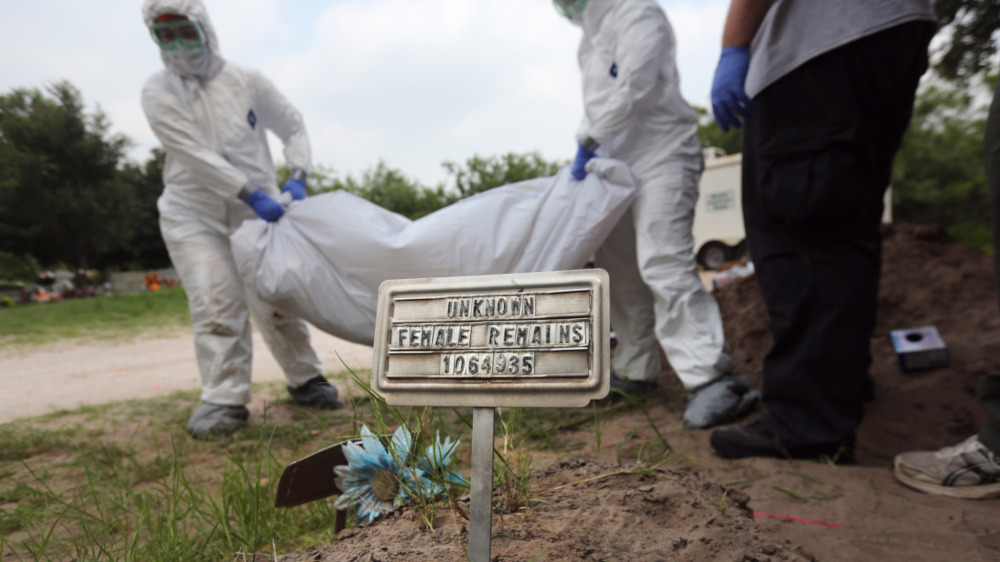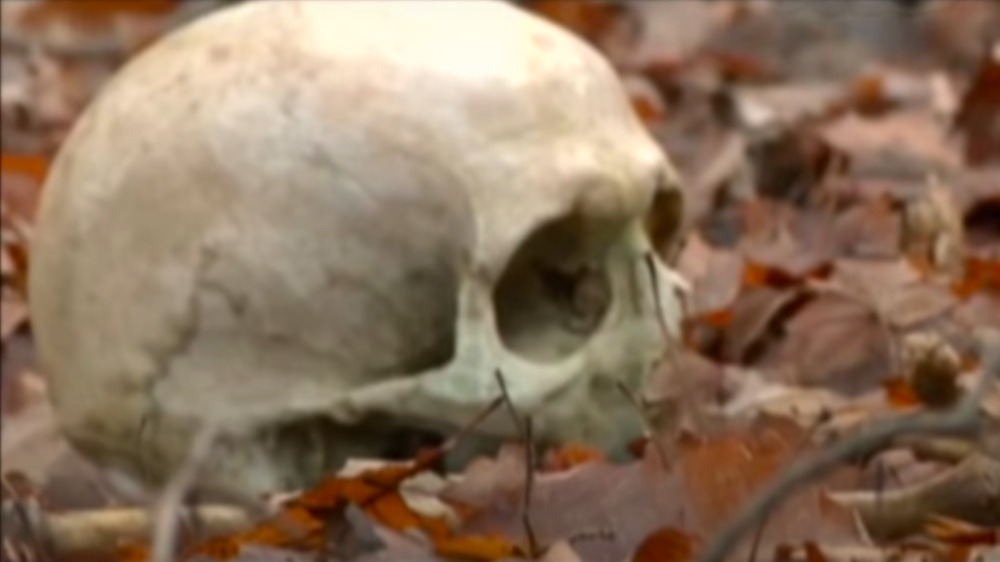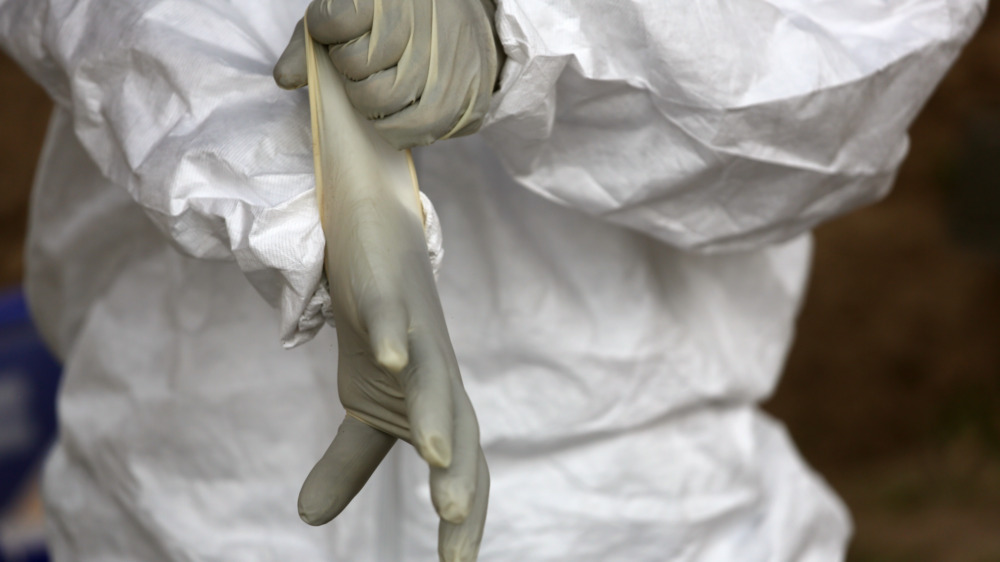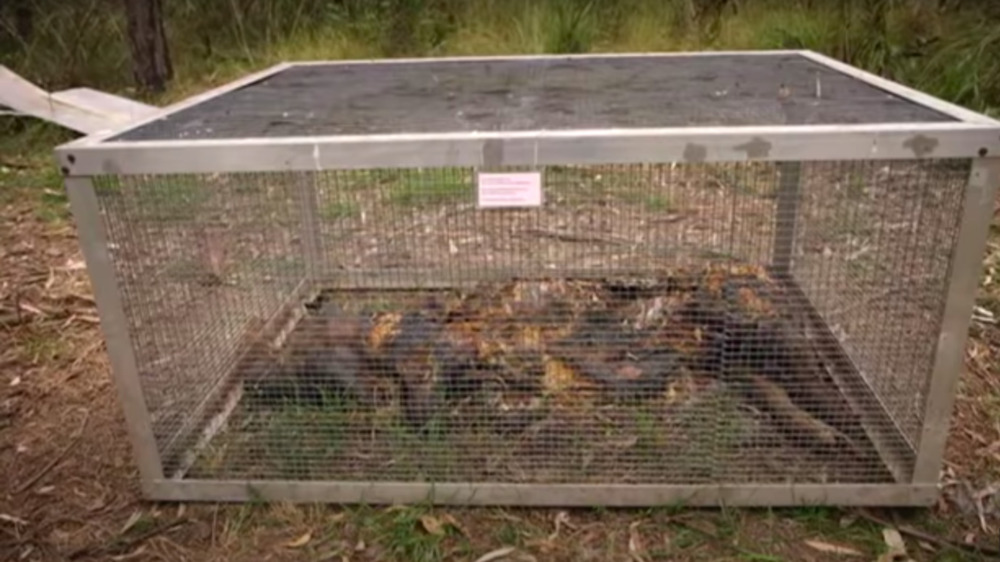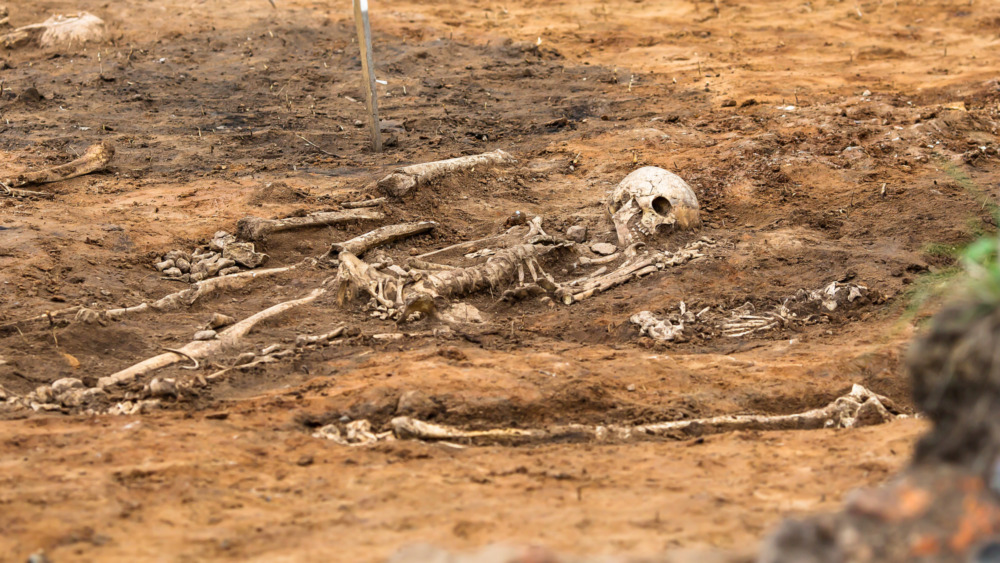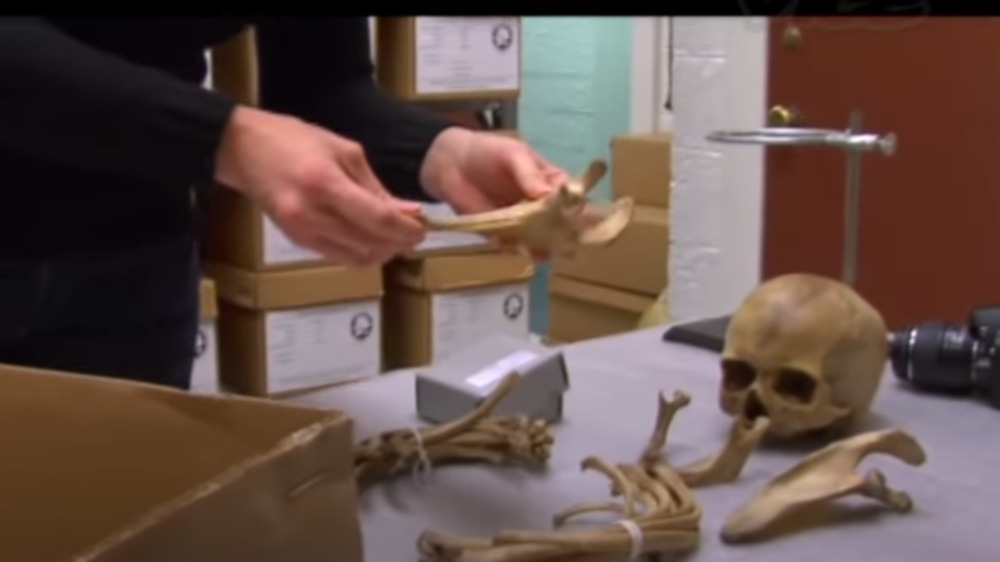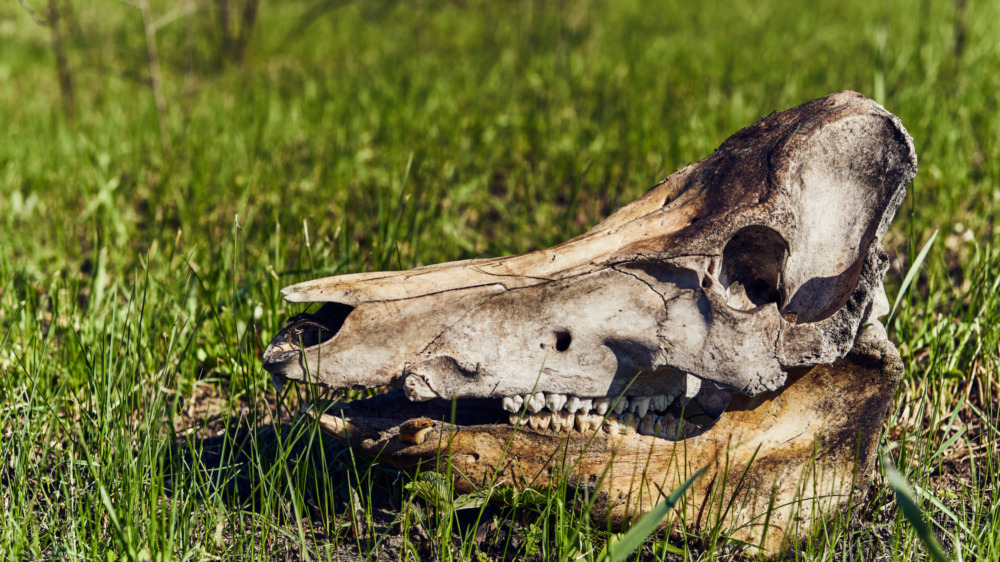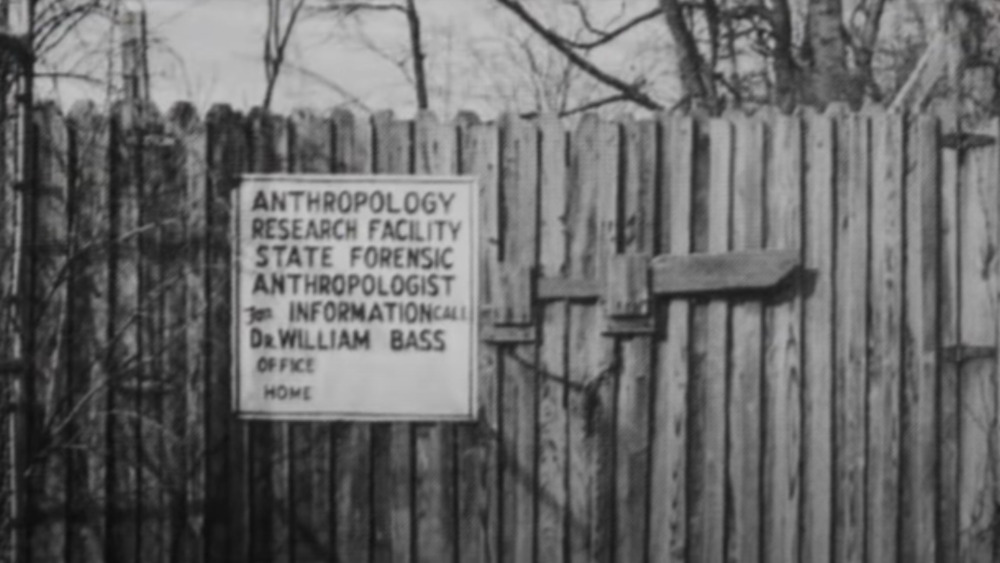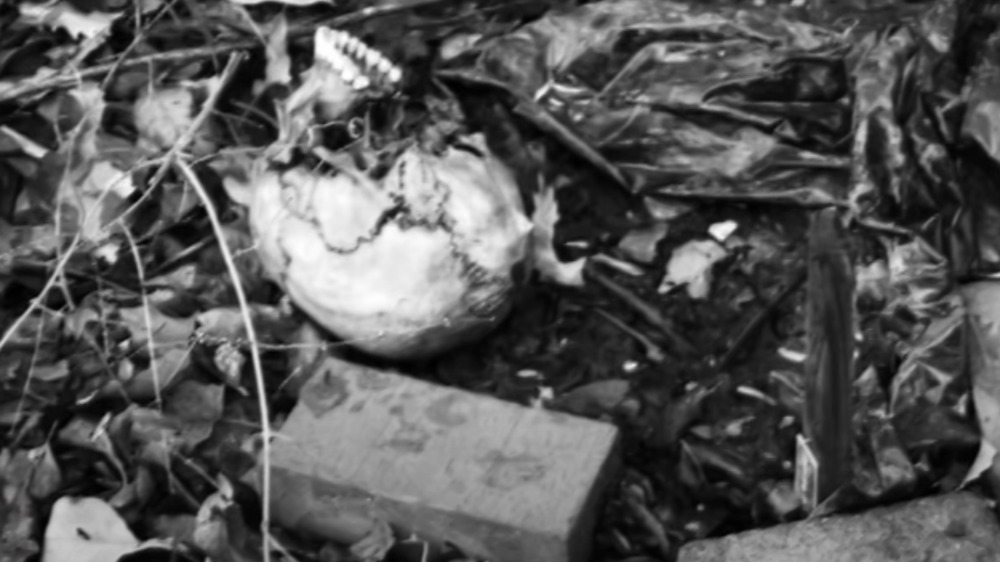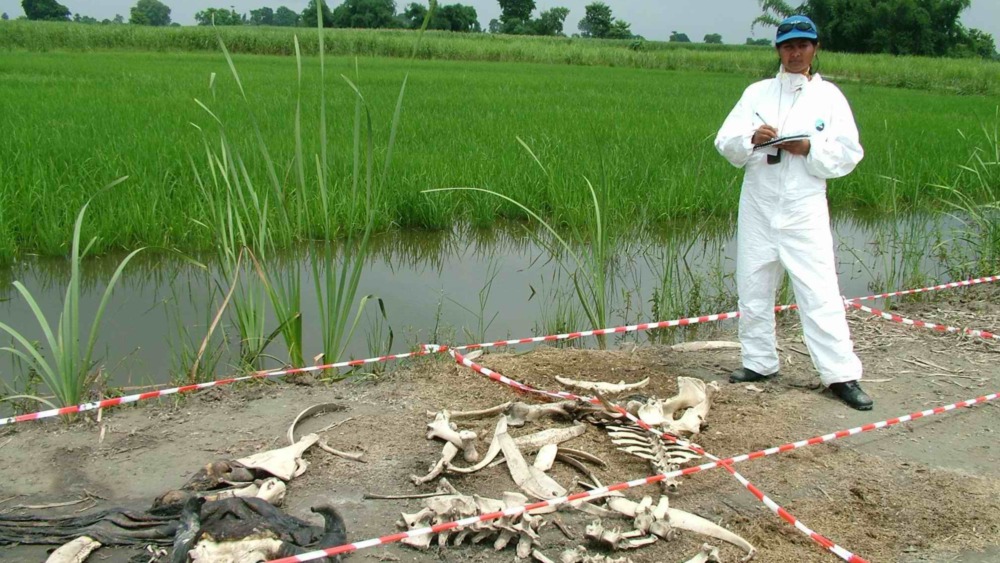The Untold Truth Of Body Farms
Although a "body farm" can conjure up an image akin to the human electricity farms from The Matrix, in reality they resemble a garden much more than a farm. Used by forensic scientists, body farms are research facilities where human remains are left in a variety of conditions so that scientists can study their decomposition. Sure, they might not smell as nice as your average garden, but they're incredibly useful for watching human remains as they change and transform after death.
And scientists aren't just doing this because it's interesting. Law enforcement often relies on forensic anthropologists to help them determine time and cause of death, writes Forbes. And with the information gathered at body farms, scientists can trace back the decomposition of a victim's remains. Afterwards, the remains are typically boxed up and studied by a variety of researchers.
Despite a sensational name, body farms are just another place where researchers study the human body, although this laboratory typically comes with more bugs. This is the untold truth of body farms.
What's forensic anthropology?
Anthropology concerns itself with the study of humanity, and one of its fields, physical anthropology, focuses on the study of human remains. Forensic anthropology is a subfield of physical anthropology "that involves applying skeletal analysis and techniques in archaeology to solving criminal cases," according to the National Museum of Natural History.
Popularized in shows such as Bones, forensic anthropologists can help solve crimes "both in the field and in the laboratory," writes Science Magazine. With their experience in archeology, forensic anthropologists are familiar with recovering evidence without having a destructive presence. And back in the lab, they can assist coroners or medical examiners with identifying victims, figuring out cause of death, or even determining what happened after a person has died.
The Journal of Forensic Science writes that the cause of death given by a medical examiner will often be based on evidence presented by a forensic anthropologist. And if a forensic anthropologist is involved in a criminal investigation, "documentation and eyewitness testimony is required of most forensic scientists, as it helps the overall outcome of a death investigation by providing the legal system with a scientific explanation of evidence."
And as scientists, even forensic anthropologists have to perform experiments to prove their hypothesis or establish patterns. That's where body farms come in.
So what exactly is a body farm?
Also known as an outdoor human decomposition research laboratory, a body farm is a place where human remains are left in various conditions so researchers can study decomposition. Some bodies are left exposed to the elements, writes Forensic Anthropology, while other bodies are buried. As insects pick at the remains, cages are sometimes placed to protect the bodies from animals. Other times, the remains are left exposed to document the effects of scavengers and predators.
According to Undark, when a human body decomposes it typically goes through five different stages — fresh, bloat, active decay, advanced decay, and dry skeletal remains. During these various stages, the human remains take on a particular physicality while different microrganisms show up on the body. And since this process starts the moment the heart stops pumping, these organisms can be used to establish a timeline to time of death.
Since environmental effects can change post-mortem estimates, scientists use body farms to study all the different things that can happen to a body. "Advances in DNA sequencing and machine learning are [also] making it possible to identify the bacteria, fungi, and other microbes associated with decay and search for predictable patterns that may eventually provide a method for more precisely determining time since death."
According to The New York Times, a body farm can contain hundreds of human remains, and understandably, there is a constant smell of death, "organic and 100 percent genuine."
What are body farms used for?
Researchers aren't the only ones who use body farms. According to Undark, law enforcement officers also use body farms when training how to "recover human remains at crime scenes." They're even used to train dogs how to track down a dead body. But one of the most significant uses of body farms is the exploration of the various things that can happen to a human body as it decomposes.
Body farms have been used to study how facial features are affected by decomposition, in addition to determining "how far into the [decomposition] process DNA can be successfully recovered," reports Futurism. And since decomposition is affected by things such as temperature and humidity, which can't always be recreated in laboratory environments, body farms offer a place in which to watch the decomposition of human remains as affected by things like rain and sun. Nature reports that time of death is often difficult to establish after the first 24 hours, and body farms can provide enough background knowledge in order to make more educated estimates. As more patterns are recognized, there's the potential to solve more crimes.
But even so, a great deal about decomposition remains a mystery. Sometimes the rate of decay varies in a way that scientists can't explain, "even when steps are taken to maintain constant variables, like body weight and location." This is one of the reasons why body farms remain a crucial resource towards understanding human decomposition.
Every experiment imaginable
At body farms, researchers run a variety of experiments on human remains to try to figure out what happens to them after varying effects. OK Whatever writes that these experiences can include covering the remains in plastic, putting them in trailers/cars, or covering them in concrete. According to The University of Tennessee Knoxville, as of 2020, researchers are conducting an experiment to determine whether or not the nutrients that are released by human remains can have a significant effect on the coloration of a tree's leaves. If this turns out to be the case, it can be used in the search for missing persons.
Remains are also subjected to various traumas such as gunshots or blunt force injuries to determine breaking patterns, but sometimes these experiments are done on pig skulls rather than human skulls.
And when accidents happen, they're still incorporated into researchers' findings. After a lawnmower accidentally ran over two skeletons at the Complex for Forensic Anthropology Research at Southern Illinois University, a study was published in the Journal of Forensic Sciences detailing the damage that a lawnmower can do to human remains.
National Geographic writes that sometimes wild discoveries are also made. In 2017, researchers at the Forensic Anthropology Research Facility in San Marcos, Texas, documented a white-tailed deer munching on human remains, "the first time scientists have observed deer eating human flesh." On other occasions, more usual characters, like cats, can shop up and contribute to science.
Body farms help dispel myths
Body farms have been incredibly useful in helping dispel myths about dead bodies. One of the most significant myths that body farms helped disprove is the idea that after death, a dead body stays in one place.
Typically, when law enforcement officers find human remains, they'll take note of the physical evidence along with the position of the victim's body. But turns out, the position may not mean much as people used to think. According to Phys, in 2019, researchers at the Australian Facility for Taphonomic Experimental Research (AFTER) discovered that "human bodies move around significantly for more than a year after death."
Science Alert writes that over the course of 17 months, photos were taken of a corpse "every 30 minutes during daylight hours. And for the entire duration, the corpse continued to move." Most of the movement was seen in the arms, which ended up to the side of the body after starting off rather close to it.
Although it was always assumed that any movement in a dead body came from an animal or an external force, turns out even dead bodies get a little restless.
Where do the bodies come from?
Unlike 18th century American doctors who resorted to grave robbing to study human remains, contemporary body farms receive all of their human remains through donations. And according to Mental Floss, there are many different reasons why people decide to donate their corpses to body farms. Many people already donate their bodies to science, but body farms don't have as many requirements as medical schools, which can reject a body if it's gone through an autopsy or simply due to weight discrimination. Others consider body farms a natural way of returning to the earth and being recycled. Plus, funerals can be thousands of dollars, while "at the Texas State body farm, dubbed Freeman Ranch, pick-up is free."
According to Forensic Anthropology, "at any given time, there are at least 50 decaying bodies at the [the University of Tennessee Anthropological Research Facility]." And over the years, the facility has taken in roughly 1,800 corpses, "with another 4000 pledging to join them in the future."
However, The University of Tennessee Knoxville notes that there are several reasons why a body may not be accepted as a donation. If someone was infected with MRSA, tuberculosis, any form of Hepatitis, HIV, or COVID-19, their body is rejected from body farm donation. This is reportedly done to limit the risk to researchers.
And usually, if no one comes to claim a body from a medical examiner, a body farm is one place where it might end up, says The Atlantic.
Animal body farms
In addition to human remains, some body farms also use the remains of pigs, which were typically used before human remains when decomposition was initially being studied. In some places, pig remains have been used to study decomposition for decades.
Just like the human remains, the pig remains are left in a variety of positions and coverings in order to observe the different rates of decomposition. Sometimes, they're even dressed up in clothing. And apparently, a 100-pound pig is "the best proxy for human decompositions," according to Particle.
Pig remains have also been used to study decomposition under water. Popular Science writes that underwater decomposition is still largely a mystery, and in Florida, researchers have been experimenting with lowering pig remains to the seafloor "to film them as they decay." And turns out, depending on whether the remains end up in salt or freshwater, decomposition can vary wildly. "In some of my experiments we've had pig carcasses...last months and months with almost no change whatsoever, and in some cases they've been skeletonized in three days," reports forensic entomologist Gail Anderson.
Inverse reports that pig remains also were used to prove the hypothesis that the remains of children decompose more quickly than those of adults. Researchers also found that "soil moisture was a dominant factor in the overall rate of decomposition."
The very first body farm
The first body farm was created in 1970 by a forensic anthropologist named William Bass, who was working at the University of Tennessee in Knoxville while also consulting with the medical examiner of Tennessee.
According to Smokey Mountain Living Magazine, Bass had previously worked excavating Indigenous burial sites in Kansas during the 1950s, a process which many described as grave-robbing. But in Tennessee, Bass was surprised to find the human remains presented with a variable he hadn't come across in Kansas — maggots. Plus, the question on everyone's mind was, "How long has that dead body been there?"
Mental Floss writes that Bass realized that the maggots were integral to helping pinpoint time of death, but he also soon discovered that there was little-to-no information on the subject. And when police presented Bass with a case regarding a Civil War-era corpse, Bass realized that it was entirely necessary for scientists to establish a "science of post-mortem investigation."
So in 1971, Bass went to the dean at the University of Tennessee to request land where he could place some dead bodies. The dean agreed with little resistance, and over the next 50 years the body farm at the University of Tennessee has become one of the most well-respected body farms in the United States.
Where does the name come from?
When William Bass came up with the first body farm, he actually didn't call it that. It was just another outdoor research laboratory. The name "body farm" came roughly 20 years later from a crime thriller by Patricia Cornwell. The Body Farm, which came out in 1995, describes an anthropological research facility that studies the decomposition of bodies. And according to Forbes, although some researchers find the name "too sensational," after the publication of Cornwell's thriller, it stuck.
Death.io writes that this name has contributed to the morbidity that surrounds body farms. But ultimately, they're really "just outdoor laboratories." And they're not just for teaching researchers and law enforcement officers. Even writers can end up finding some use in them. In The New York Times, Lisa Gardner writes about visiting a body farm in order to write the perfect murder into her next novel.
"I had originally planned on having the body in my novel burned in order to make identifying it impossible. But after discovering that such an act would never fool a forensic anthropologist, I spent the next two days frantically trying to come up with a new ploy."
Body farms in the United States
Although the University of Tennessee houses the largest body farm facility, there are several others across the United States. Forbes writes that the one created by William Bass in Knoxville ended up being the only body farm in the country for 25 years until similar facilities were opened at Western Carolina University and Texas State University in the early 2000s.
As of 2021, there are seven body farms in the United States that work with human donations. Body farms were also created at Sam Houston State in 2010, Southern Illinois University, Carbondale, in 2012 and Colorado Mesa University in 2013. There are also plans for body farms in at least three more states, which can offer a great deal of knowledge to the field, considering the variety of environmental effects that can affect decomposition across the United States.
According to Herald Tribune, the University of South Florida opened their first "open-air laboratory" in 2017. However, after the Pasco County Commission terminated their partnership with the University of South Florida, the body farm may end up closing in 2022.
Body farms around the world
The United States isn't the only place where researchers plant bodies. In 2019, the United Kingdom announced that researchers were working with the British military to create the first body farm in the nation, says Undark. And Mumbai Mirror reports that researchers in India, like archeologist Roma Khan, also aspire to build body farms and research facilities to study decomposition and assist investigators.
According to Particle, the Australian Facility for Taphonomic Experimental Research (AFTER) is "the only research facility in the southern hemisphere for the study of human decomposition." And although the Academic Medical Center (AMC) in Amsterdam received a permit in 2017 to open a forensic research facility in Europe, the first of its kind, it won't be the same as the body farms in Australia or the United States. While other facilities study human remains in a variety of situations, the AMC in Amsterdam "will only study bodies that have been buried," says OK Whatever.
Forensic scientist Shari Forbes has also been trying to establish a body farm in Canada after helping set up the one in Australia. "For the longest time, people assumed that the legislation in the US was somehow different and allowed these facilities that couldn't happen elsewhere. But in the last few years, people have started to realize these places can be legally built," she said to Nature.
